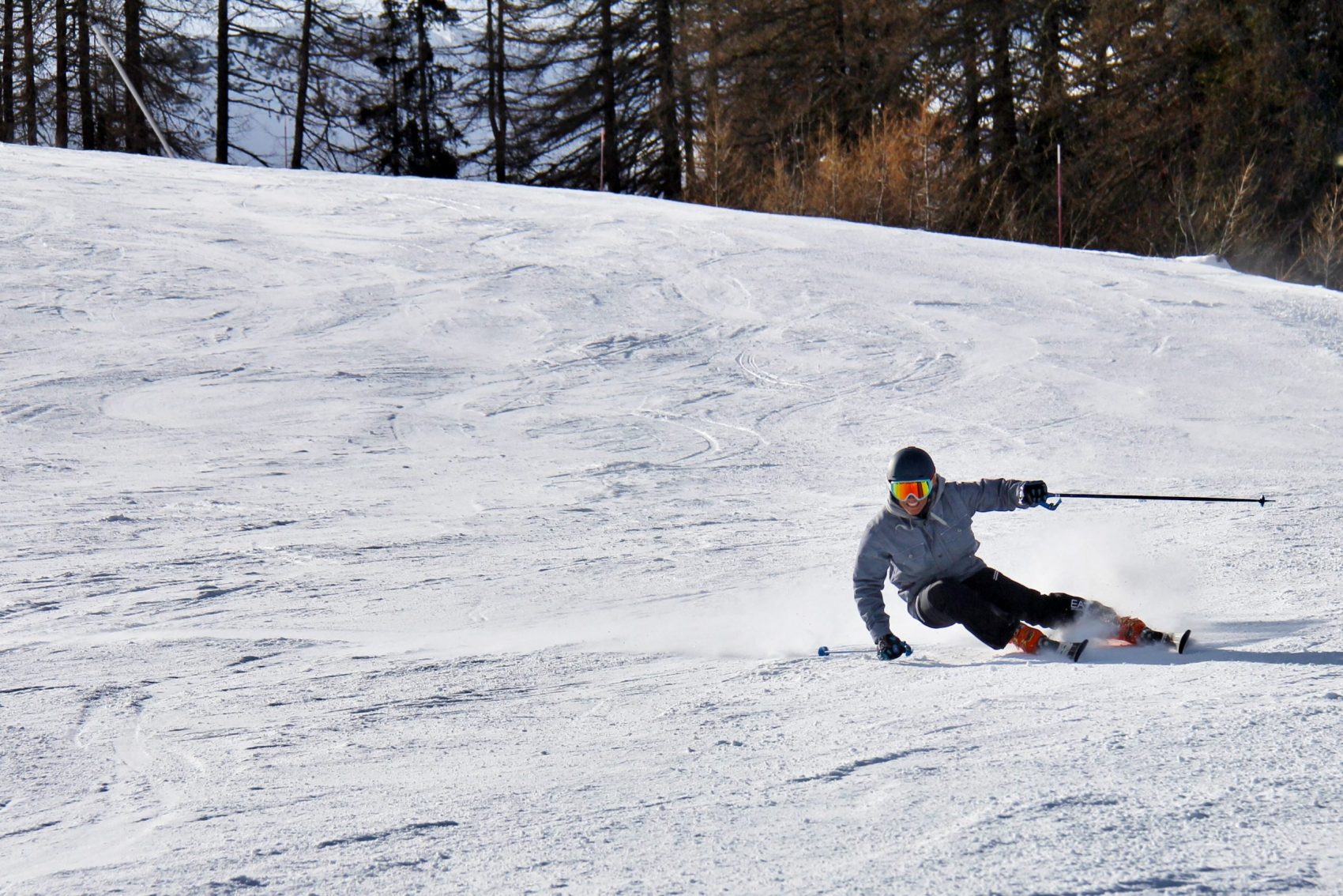
Even though most ski manufacturers haven’t released their winter 22/23 ski lineups, it’s never a bad time to learn more about ski design and performance. It seems like nearly every skier is opting to ride skis that are wide underfoot, and indeed, the market reflects this trend. From 2012 to 2017, there has been a 25% increase in wide ski sales. However, studies have shown that bigger isn’t always better, at least not when it comes to ski width.
Before diving into the studies, let’s begin by clarifying some terms. All skis come in different dimensions but are measured essentially the same way. First, the length of the ski is measured from tip to tail and is typically given in centimeters. For example, a ski might come in a 166-centimeter length or a 187-centimeter length.
- Related: Step-by-step Ski Buying Guide
Next, all skis have varying sidecuts. This is expressed by three numbers. For example, 135/98/119. The first number, 135, means that at its widest point at the tip, the ski measures 135 millimeters. The middle number, 98, refers to the ski’s width underfoot, or the width of the ski at its narrowest point. This middle number defines the width of the ski. The last number is the width of the ski at its widest point at the tail. The sidecut of the ski determines the ski’s turn radius, which can range from a 12-meter radius all the way up to a 45-meter radius, though most recreational skis fall in the 15-25 meter radius range.
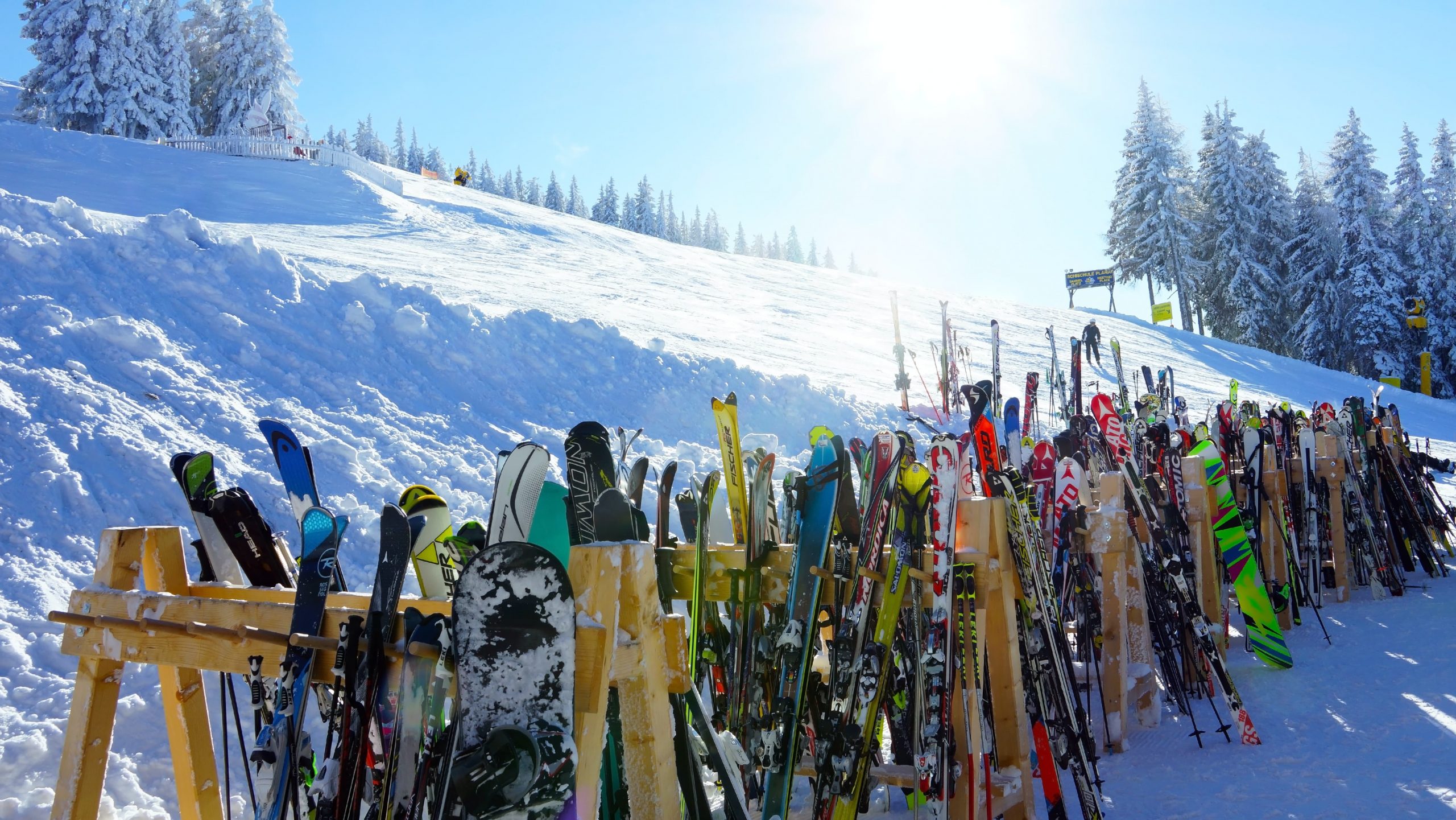
There is no agreed-upon industry standard width for a narrow, medium, or wide ski. Backcountry.com classifies ski widths by intended use, so a groomer ski is anything 85mm underfoot or narrower, while an all-mountain ski can range from 85-105mm, and a powder ski is 98-125mm underfoot. Evo.com claims that skis 85-95mm “are primarily used for on-trail skiing but have the ability to spend some time off the groomers in the right snow conditions,” while 96-110mm is the “ideal all-mountain width.”
The scientific community, on the other hand, defines a narrow ski as being 80mm or less, a medium width ski as 80-90mm, and any ski above 90mm is a wide ski. REI.com claims that the central difference between a skinny ski versus a wide ski is that “skinnier skis are better for carving turns on groomed runs, while wider skis provide better flotation in deep snow.” In fact, wide skis are often touted as being ideal for powder days, and who doesn’t want to have the most fun on a pow day?
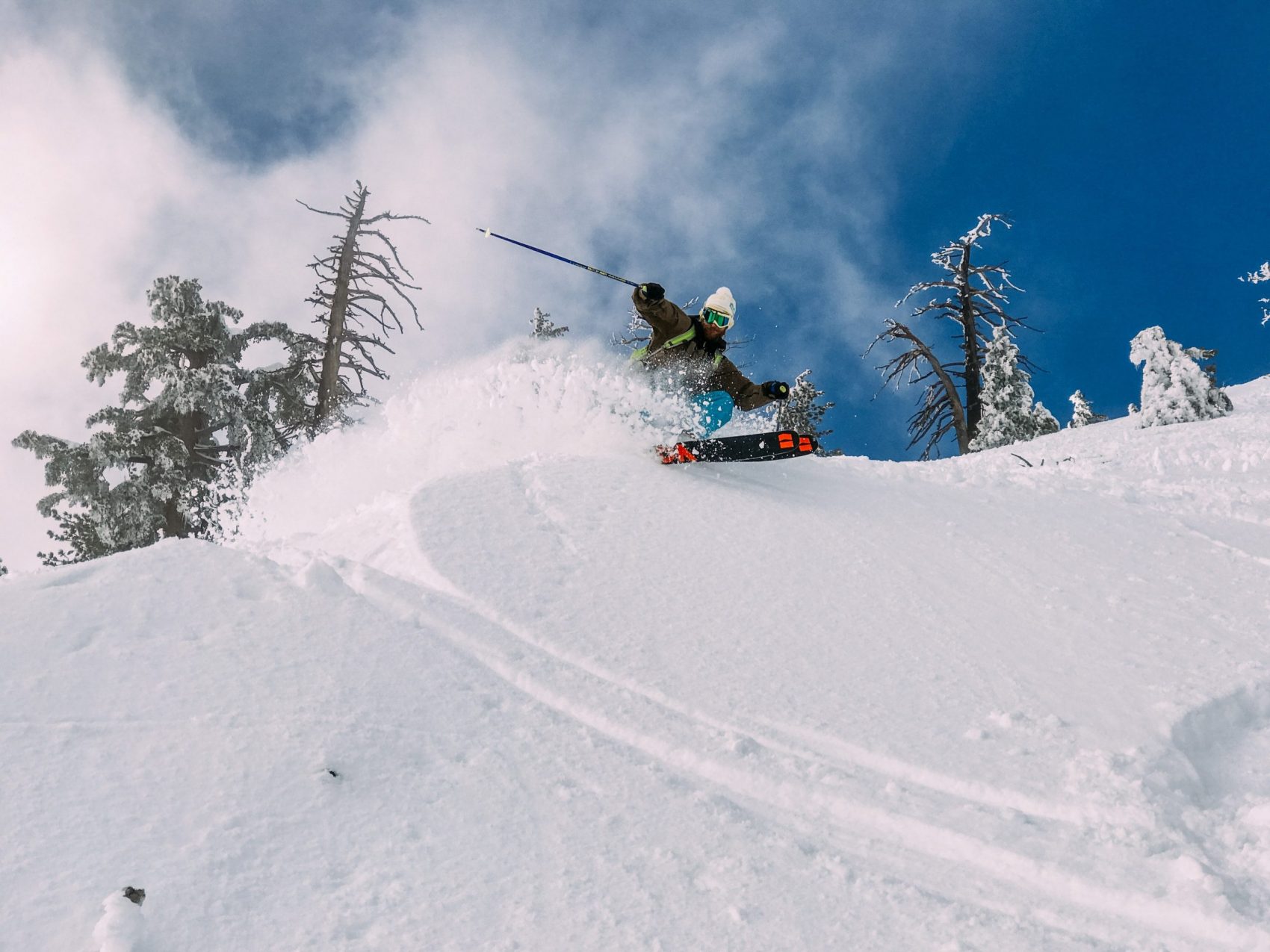
The problem is that the purported advantages of a wider ski only occur on truly deep days with at least a foot of fresh snow. With less than a foot of fresh, the skier will be skiing on the bottom of the fresh snow or the top of the firmer, older snow, and they will be affected by ground reaction force, or GRF. GRF is a measure of how much force is exerted by the ground on a body in contact with it. Simply, it is a measure of how much the ground is pushing back against the skier.
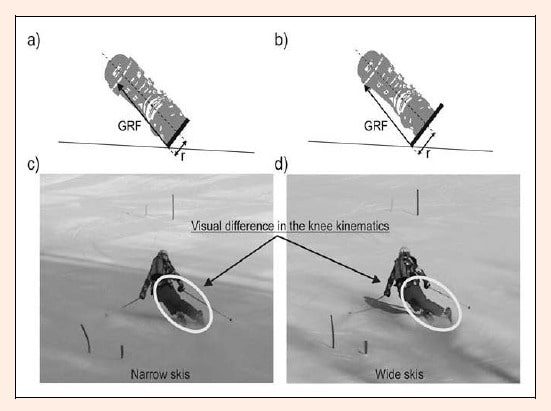
The effects of GRF change as ski width increases. With a narrow ski, GRF pushes up from the edge of the boot; however, with a wider ski, the GRF pushes up from the edge of the ski which, because of the ski’s width, is wider than the boot. This forces the knees into something called the valgus position–in layman’s terms, the skier becomes knock-kneed.
Furthermore, skiers on wide skis tend to ski in a more extended stance, possibly to reduce force. This reduces their ability to use their muscles to stabilize their knee joints. Wide skis also create a mismatch in rotation of the femur and the tibia. With narrow skis less than 80mm underfoot, the tibia and the femur both rotate the same amount, around 12 degrees.
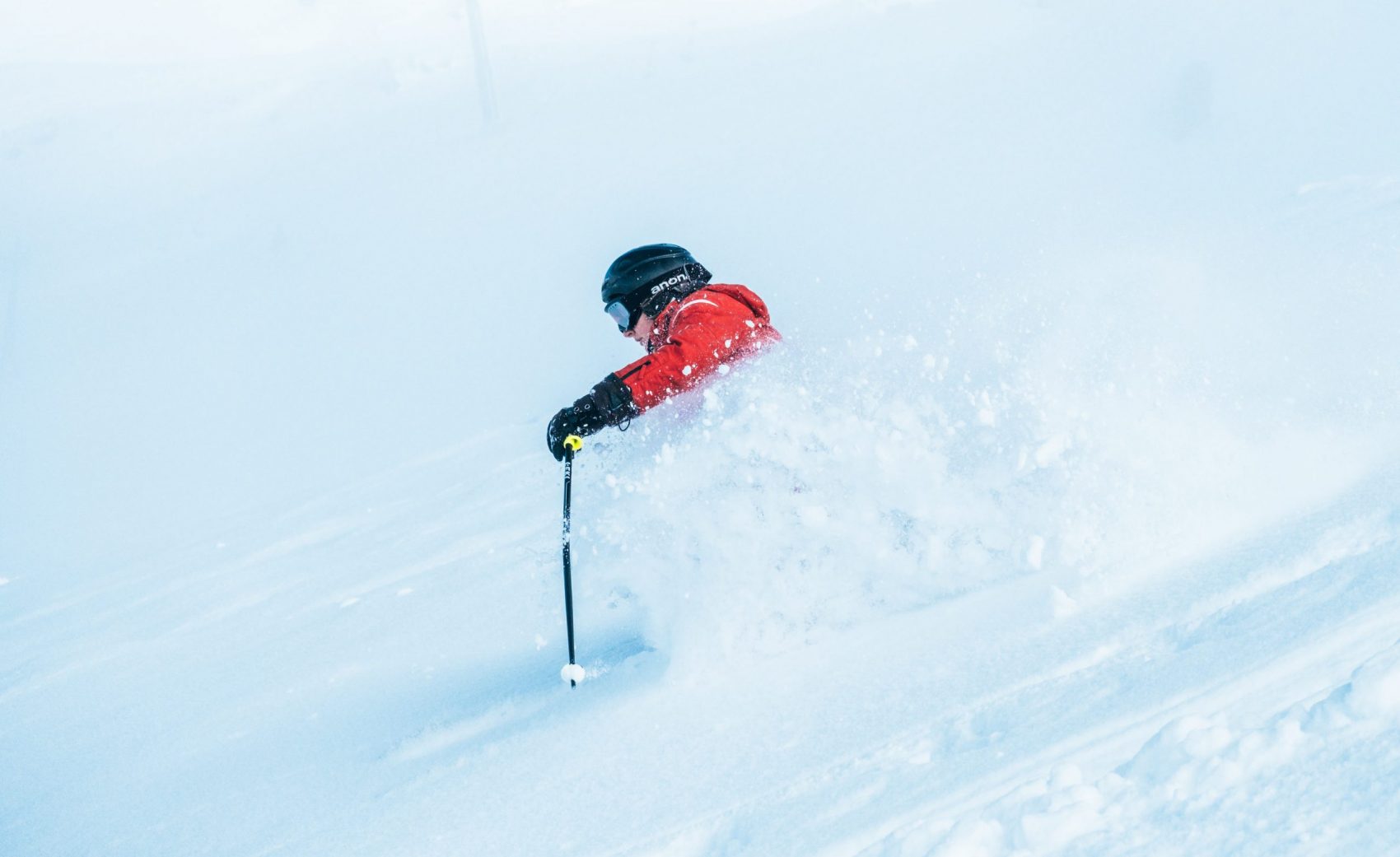
On wide skis, the femur only rotates 8 degrees. The effects of this mismatch are somewhat reduced by the skier’s extended stance; however, this mismatch still stretches and stresses the ACL and the MCL. There have been many anecdotal reports of knee pain after even just one day on wide skis.
But, again, if the skier is skiing on a deep day of a foot or more of fresh, they experience a dramatic reduction in GRF, which essentially eliminates the negative consequences of skiing on a wide ski. So it seems that wide skis are acceptable in deep snow.
In a study, Does Ski Width Influence Muscle Action in an Elite Skier?, Seifert et al studied muscle activation on wide versus narrow skis in both deep powder snow and on groomers, and found that the overall difference in muscle activation was not significantly different between the narrow ski and the wide ski on the different snow conditions. He also found that skiers on wide skis in powder used fewer muscles during the steering phase of their turn, which supports the claim that wide skis are easier to turn in powder. However, on wide skis in powder, skiers use quite a bit of muscle in the beginning and end of their turns.

The problem is that ski runs don’t stay untracked for long, and soon skiers find themselves no longer effortlessly floating through fresh, but fighting their way through the chop and finding the bottom of the new snow. When that happens, the negative effects of GRF on a wide ski come back into play: a knock-kneed position, stress on the knee joint, and the surrounding muscles’ reduced ability to stabilize the knee due to a more upright stance.
While Skis.com claims that skis 85-95mm wide are primarily groomer skis but “can be used off the groomers in the right snow conditions,” Seifert’s study shows that the overall muscle activation between a narrow ski (less than 80mm underfoot) and a wide ski (over 90mm underfoot) in deep powder snow conditions is not significantly different. Retailers claim that it is difficult to ski a narrow ski in powder, but the data does not support this claim.
For those of us looking for a new pair of skis this winter, it is worth considering a narrower ski. Your knees will thank you.
I’ve skied Alta/Snowbird for decades on skis as narrow as 55mmx210. You sink in way deep, and the snow holds you up! We skied with snorkels more than a few times. You had to tape the snorkel to your goggle-strap to keep it vertical. Moreover, there were hundreds of thousands of deep powder user-days in the Wasatch on Skinny skis years before there was even this debate. There are no absolutes in skiing.
The skiing-safety “scientific community” is rarely on agreement on anything. It is wrong to lump us together as a singular cohesive voice.
This opinion-piece radically misunderstands John Seifert’s research on this topic.
Reference to the other MAJOR research on this topic is completely absent.
The editorial comments (conjecture) about what the ski is doing in the snow is nowhere (not supported in) John Seifert’s research.
Basic biomechanical terms and concepts are incorrect.
This reckless commentary has caused a lot of good skiers to wrongly-harden their positions about this important topic.
For the young that want to continue skiing as they mature and the nay-sayers out there. Here is a controled study regarding ski waist width when skiing ‘groomers’.
J Sports Sci Med. 2015 Sep; 14(3): 606–619.
Published online 2015 Aug 11.
PMCID: PMC4541126
PMID: 26336348
The Waist Width of Skis Influences the Kinematics of the Knee Joint in Alpine Skiing
Martin Zorko,1,* Bojan Nemec,2,* Jan Babič,2,* Blaz Lešnik,3,* and Matej Supej3,4,✉*
Also, mid to wide skis turn ‘many’ on groomed slopes into unguided “meat missles’!
As with most endevors “use the proper tool for the job at hand”!
It seems like this is all based off one study that looked at limited factors. I skied pow on skinny skis for years before fat skis came out and fat skis make powder and crud much easier to ski with more control. If fat skis result in more control and less chance of a bad fall leading to injury they may be safer than skinny skis in those conditions. I’ve never felt any added pressure on my knees or pain from fat skis on soft snow. On hard pack I ski skinny skis, but will ski hard pack groomers between powder runs and don’t feel any issues. But I’d don’t carve as aggressively. I already had decent technique before fat skis came out so that may limit any ill effects.
Your assumptions about not being able to ski a 78mm under foot ski in 18 inches of powder are opinion and not scientific.. I’ve been doing it on 175cm skis for decades, all over the world, I Austria, Alaska, and Colorado. I have recreational skiers, clients who can do it almost as well. It’s about the technique, not the ski. The research done is completely accurate. They used all available tools to measure and quantify their findings about wide skis, pressure sensors, force transducers, EMG, Electromyography, etc.
Try to mention your source literally anywhere in your article. I assume the ‘scientific community’ you’re referencing is the one article linked in a photo caption?
Your bottom line conclusion of “Retailers claim that it is difficult to ski a narrow ski in powder, but the data does not support this claim” is just laughable. I’d love to see you attempt sking through 18in of fresh blower on a 78mm ski. To pull that off you’d need a ski that’s over 200cm long like grandpa used to use, and well see how happy your knees are with that added rotational force on every turn
Another fact you do not bring up is the weight of the skier !!!
My wife and kids don’t break through that layer of crust underneath the freshies, but I on the other hand with 250 pounds break through and find the rocks underneath like magnets,
Where in the GRF equation does weight play a role,
it obviously sinks to the ground
until one finds the reactionary force of the rocks below?
Your point, “With less than a foot of fresh, the skier will be skiing on the bottom of the fresh snow or the top of the firmer, older snow, and they will be affected by ground reaction force, or GRF.” is twisted to make your point and is not true. If u ski on a 125mm or greater under the foot u easily get off that bottom with 1-4″ of fresh depending on the percent of water in the snow (density). Which is one of the big reasons I ski on fat skis. You can have best of both worlds by using your fat skis and offfsetting your bindings to the inside so they r at the same place over the edge as a 80mm or less ski. Fatter the better as your GRF doesn’t change if u offset your bindings.
Ola !
Keep up the articles,
may be some times toooo many, but a lot of them are great !
I’ve been skiing for over 50 years and have come to find the safest form of skiing is on a Monoski,
Yes ! You are limited in many ways, I own 4 of them !!
for instance you cannot traverse as high as normal or as bad as a snow boarder,
cant walk in them – ouch only or poles. Bad habit of double pole plants. Got to keep pace up, like on a bicycle, or it becomes an issue of balance only.
But they are dreamlike and fantastic in the powder even at 4- 6″ deep only !
and they are cruisers on the groomed runs, forget the moguls.
But best of all, that old deep snow off to the side of the run
that has been skied in before, left tracks,
and is the stuff you do not want to enter in on 2 boards ,
because you know you are going to hurt something !,
Well the Mono devours the stuff !
So long the snow is PLIABLE,.
may it be light and fluffy, or slushy mashed potatoes, sierra cement, etc
The Monos love the pliable stuff – just no hard, hard packed super firm snow, or ice.
Remember you have only one steel edge to work with !
Keep up the good work
and narrower under has always been better !!
In reality its the hour glass proportions that make you turn !
those proportions are the mm’s you are talking about.
The irony is today, if you buy a certain model of ski,
those 3 dimensions under the ski are the identical on all the different lengths,
of that same model !!! .
In reality because the proportions are different in every different ski length , making none of them ski /turn the same. The radii are all off. They feel the same (core, side cut, torsion, etc) but they will all turn differently due to their length being a variable, which in the mathematical equation of statics and leverage, the length is squared, making a very powerful variable and not a simple constant/ static factor like the dimensions under the ski.
May be you should write an article and wake up the ski manuf. industry.
I swear thru the 60’s, 70’s, and 80’s the ski industry knew about these proportions, but the materials were not all there as they are today, and in the 90’s they were promoting “parabolic” = hour glass one we had composite resign instead of simple fiberglass resign.
Would love to hear your opinion.
Ray out
Dear Folks
I’ve been reading your web for a couple of years- I find it relaxing and sometimes interesting. I found the article on ski width well written and fascinating.
Please continue articles in this area!